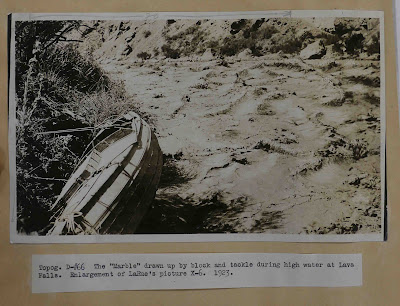The Ugly Behind The Grand Canyon Historical Society
The Ugly has existed around the Grand Canyon as long as we, as a species, have been here. While historians can’t pinpoint the exact moment or location of the first human encounter with this vast abyss—estimated to be around 10,000 to 12,000 years ago—it's clear that conflict over its control and meaning has been a constant. Evidence of fortified structures suggests that early humans fought among themselves long before Europeans arrived to do that. Starting in the 1540s, indigenous peoples began their own struggles against European invaders. These conflicts continued as Europeans fought both the indigenous populations and each other in their pursuit of independence from European powers.
By the early 1900s, timber and mining barons clashed with the emerging National Park Service, attempting to prevent the establishment of Grand Canyon National Park. After the Park was officially established in 1919, the Park Service forcibly removed Indigenous peoples from their ancestral lands within the park boundaries. Later, private companies like the Fred Harvey Company, as well as influential figures like William Randolph Hearst, tangled with the Park Service over the management of the Grand Canyon. In the 1950s, Norm Montgomery initiated helicopter tours from the Parl's gateway community of Tusayan, igniting an ongoing battle over National Park airspace and the preservation of a resource known as Natural Quiet. In another ongoing chapter, river concessions within the park thwarted the Park Service’s attempts to grant Wilderness designation to the Grand Canyon.
Grand Canyon river runners have been engaged in their own contentious debates since the late 1800s. Robert Stanton famously disagreed with John Wesley Powell, and Julius Stone later took issue with Stanton. Fred Dellenbaugh clashed with both Stanton and Stone, championing historical inaccuracies. Otis “Dock” Marston, a renowned figure in river history, spent over three decades documenting the Grand Canyon’s waterways before his death in 1979. Marston, like others before him, had his fair share of opposition from those reluctant to allow scrutiny of their actions on the river. Similarly, when I began my own research into the commercialization of the river, I found myself facing battles not unlike Marston's.
This is my account of one such conflict. It’s my opinion, with supporting documentation, that a group aligned with the commercial river industry took control of the Board of the Grand Canyon Historical Society. In 2023 this board ousted me from the organization. The Board then altered the society's bylaws twice—each time to protect their interests and shield themselves from the rest of the outraged membership. It's ugly, unfortunate, and totally unnecessary.
On October 16, 2023, the board voted me a member in poor standing until 2029 and agreed not to tell me until after the November 1-4, 2023 History Symposium.
Until that vote, I had been a member in good standing for a decade, served on the Board as the Society Secretary for 6 years, and was repeatedly recognized for excellent service to the Society.
The hurtful October 16 decision occurred following a 50-minute PowerPoint presented by the Society's Vice President using, in my opinion, lies, innuendo, defamation, and character assassination. Just before his presentation, I was told to excuse myself from the meeting and instructed to wait in a nearby room, denying me the simple and required courtesy of defending myself. Over the last seven years the Vice President conducted similar tactics in board candidate nominating committees in which I was never allowed to counter his false claims. The board's disciplinary action continued a recent trend of ignoring Society Bylaws and Policies that included following Robert's Rules of Order. You can see the Vice-Presidents presentation here.
The October 16 vote occurred outside of parliamentary procedure and was overturned by the Society President at the next Board Meeting. I was then invited to an executive session meeting January 26, 2024 that again denied me an
opportunity to defend myself against the October 16 accusations. The January 26 meeting included a disciplinary recommendation based on transparent actions I
took to alert the membership about the October 16 meeting. The recommendation suggested
members don’t have insight into the accusations against me and ignores past
board members appalled by the vice president’s attacks over the years. I am
grateful to the board members who recognize the real problem is with the then Vice-President and,
in my opinion, based on personal vendettas and differing views of Colorado
River wilderness management. On January 19, 2024, I terminated my membership with the Society.
In my opinion, the present operations of the Grand Canyon Historical Society sets a very shocking attempt to censor Grand Canyon History. Here is supporting documentation that refutes the Vice President's flimsy claims.
Until the Board acknowledges the Society is a Member based non-profit, posts all the past meeting minutes (as was done in 2021 and earlier years), follows Robert's Rules of Order, and allows the membership to approve bylaw changes, I certainly don't recommend anyone consider membership in this Society.


